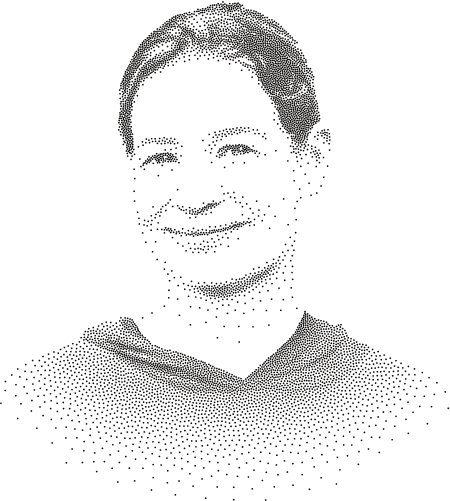Katharina Zott studied enology in California and earned her doctorate in Bordeaux. For the love of the craft, she gave up her scientific career and took over her family’s distillery. This is located in Ustersbach, Bavarian Swabia. Her family has been farming there since 1530. Katherina exclusively processes fruit from her own cultivation. HIMBEERE 251 is a raspberry liqueur of a completely different kind. On the one hand, the raspberries are elaborately strained to obtain the purest possible fruit aroma, and on the other hand, only raspberry brandy is used.
fresh perfume scent | intense raspberry aroma | floral
raspberry | apricot | pineapple
raspberry | tart-sour | fruity

Himbeerbrand durch Mazeration und Destillation | Himbeerdirektsaft | Zucker
If you look into the past, you quickly realize that a nostalgic glorification is by no means appropriate. In a book on liqueur production from the middle of the 20th century, the production of liqueurs is described as the "mixing of semi-finished products such as rectified spirit, sugar and fruit juice". Going back even further and reading an early 19th-century manual for the "Liqueur-Fabrikant," (liqueur maker) it recommends using "spiritus rectificatissimi," a precursor to today's neutral alcohol, to make liqueurs.
Cheap, sticky sweet and lacking in aromatic complexity - this is still the image of liqueurs today, which was probably similar in the past.
Nevertheless, we asked Katharina Zott to create a raspberry liqueur for the Freimeisterkollektiv to dispel any preconceptions about liqueurs. What Katharina produced exclusively for us is, on the one hand, in stark contrast to the described liqueur tradition, and on the other hand, her fruit liqueur also consists of only three ingredients: Alcohol, fruit and sugar.
However, this is exactly where the difference lies. Katharina uses only raspberries from her family’s cultivation. She has chosen two different varieties of raspberries: a summer variety with a gentle juice profile and a variety that is harvested in late summer and has an aroma that is rich in acid. The two berry varieties are cold and gently pressed separately into a direct juice.
The alcohol used for this liqueur is not a cheap neutral alcohol, but exclusively a raspberry brandy obtained by maceration and distillation. Katharina partially strains the raspberries to avoid a woody aftertaste in the brandy. The strained berries are partially fermented, and then grain distillate is added at a ratio of 5:1. This means that for every 5 kilograms of raspberries, there is one liter of alcohol. From this mixture, Katharina distills an intensely aromatic raspberry brandy, which is mixed with the one hundred percent direct juice. Finally, she adds just the right amount of sugar to perfectly balance the acidity and sweetness.
"I wanted to move away from sweet liqueurs and toward a fine digestive," says Katharina, describing her work for the Freimeisterkollektiv. The immediate aromas of fresh raspberries characterize this drink. This no longer has anything to do with conventional liqueurs. HIMBEERE 251 impressively condenses the aroma profile of the raspberry and brings it to the point. One is overwhelmed by the complexity and intensity. With this creation, Katharina has taken a radical new direction in the liqueur tradition.

-

Katharina Zott
Distiller | Ustersbach | Swabia (Bavaria)
Katharina Zott is a Ph.D. oenologist and distiller. After completing her technical college degree in agriculture, she pursued a degree in beverage technology. In order to gain admission to the program at Geisenheim, Katharina completed a pre-internship at wineries in Germany and South Africa. Reflecting on her experiences during that time, she jokingly says, “My heart was lost in wine.” A scholarship allowed her to transfer from the Geisenheim campus to the Department of Viniculture and Enology at the University of California, Davis. There, she noticed that much revolved around the “style” of wine, particularly the “French wine style.” Katharina thought to herself, “Well, I want to see what they want to imitate,” and went to the original setting of this wine stylistic to continue her studies there. She completed her Ph.D. with a biochemical research project at the Institut des Sciences de la Vigne Vine et du Vin at the University of Bordeaux.
Throughout her academic education and research activities, Katharina never lost touch with her family’s agricultural business. In her spare time, she regularly traveled to Ustersbach in Bavarian Swabia to help out on the fruit farm and distillery. Her family has been cultivating fields in this region since 1530. Her parents specialized in fruit growing as part of a massive agricultural structural change in the region. “Inspired by my mother’s homeland, which is located near Lake Constance, my parents decided to focus on fruit cultivation, which is atypical for our region. It all started with raspberries, then sour cherries were planted, and blueberries were grown.” However, Katharina emphasizes that “due to climate change, we have to constantly question the range of varieties today, as the weather has become more extreme.”
Katharina’s passion for flavors and craftsmanship accompanied her from an early age. At the age of 17, she already made her first liqueur, a raspberry liqueur. During her study breaks, she spent most of her time in her father’s distillery. In 2010, she decided to withdraw from research and dedicate herself entirely to the art of distilling. Her brother took over the family’s fruit farm, while Katharina continued to run the distillery. Almost exclusively, she processes the fruit that her family grows. The basis for Katharina’s research in Bordeaux was the wines and yeast cultures of renowned wineries in Saint-Émilion. She was fascinated by how much complexity and terroir character could be extracted from the grapes that, as she says, “grow in a field.” This experience shapes her work as a distiller: “We too can refine what we grow and transport the flavors of the terroir. I’ve made it my mission to bring our terroir to life.”

